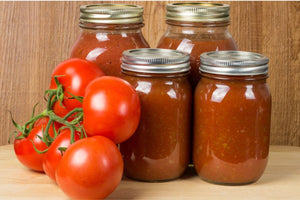Top 15 Vegetables to Grow for Food Pantry Donations
DonatingDo you love gardening and often have more produce than you can use? Why not turn that abundance into a generous gift for your community? By planting an extra row of vegetables in your garden, you can make a meaningful contribution to local food pantries that are eager for fresh, home-grown produce.

Local food pantries rely on donations to support families in need, and fresh vegetables are always in high demand. Imagine the impact of your garden extending beyond your backyard and helping to feed those who are struggling. We reached out to local food pantries to learn what they need most, and they’re thrilled at the idea of receiving your extra harvest.
Tips on Harvesting and Donating Garden Produce
When donating vegetables to your local food pantry, harvest as close to the time you deliver the produce as possible. This will help ensure a delivery of fresh produce. Check in to make sure the location is open to accept a donation.
Use this link to Ample Harvest to help find a local food bank. Contact information is included so you can check their hours before you go.
If, like many of us, you sometimes get carried away planting various beans, tomatoes, or other vegetables, consider dedicating part of your garden to this cause. Even a small extra row can make a big difference.

Vegetables to Grow for Your Local Food Pantry
Whether you plan ahead or find yourself with a surplus, your donations will be greatly appreciated.
While planning your garden this year, think about adding these top-requested vegetables:
Beets
For those who love beets, fresh-grown are the best. Beets are excellent for donating because they store well, and both the tops and the roots can be eaten. All parts of the beet are healthy and high in vitamins and minerals.
Broccoli
Broccoli has its haters, but it is an important vegetable in a healthy diet. It is high in fiber and folic acid. Broccoli also has excellent amounts of vitamins A, K, and C, and studies show it can help prevent cancer and heart disease. Grow an extra row of broccoli and help improve someone else’s health.
Cabbage
Cabbage stores well, making it easier to donate to local food pantries. It is also a main ingredient in a variety of cultural dishes. You can plan to grow cabbage in your fall or winter garden.
Carrots
Carrots are a healthy vegetable that most children love to eat. And homegrown carrots always taste sweeter. If you love growing carrots, plant an extra row or two. There’s always a need for carrots.
Onions
You may not consider onions a vegetable that anyone would be excited about receiving; however, onions form the base of a variety of delicious recipes. “It’s hard to imagine civilization without onions.” This quote is attributed to Julia Child, and she knew a few things about cooking. Any extra onions you donate will add flavor to even the most humble of dishes.
Beans
Green beans, lima beans, and most beans are appreciated. You can donate both fresh and dried varieties. Beans are filling and a good source of protein. They are also an easy vegetable for beginner gardeners. Beans can be started indoors or direct sown. You can have an abundant harvest from one seed, so plant an extra bean or two.
Cucumbers
All kinds of cucumbers can be shared with your local food pantry. Marketmore are the most familiar cucumbers, but serpents are fun for those willing to try new varieties.
Cauliflower
Cauliflower is an excellent vegetable for cooking and eating raw. It can be fried, baked, battered, and riced. There are enough ways to cook cauliflower that there’s something for everyone.
Melons
A ripe, juicy cantaloupe could make someone’s day better. Food pantries love being able to share watermelon. Melons are not available all year round, and getting a fresh, ripe one is a sweet treat.
Peppers
Food pantries can use both sweet and hot peppers. Peppers add a lot of flavor and can be enjoyed raw and cooked. Your abundance of peppers will be welcomed and used in a variety of ways. Peppers can be grown in a variety of locations, including containers.
Leafy Greens
Leafy greens like spinach, lettuce, and kale require a little extra effort to be delivered fresh. However, they provide a healthy boost of nutritional benefits. In some locations, greens can be grown year-round.
Winter Squash
Winter squash stores well and lends itself to an easy, fresh food donation. Butternut is a familiar favorite for many people but spaghetti and acorn squash are also delicious.
Zucchini and Summer Squash
Fresh summer squash picked at the right time is delicious. By picking often, you can keep your zucchini and squash plants producing. You can also donate even more as you keep picking them when they’re young and tender.
Tomatoes
You already know that there’s no comparison between homegrown and grocery store tomatoes. You likely have your favorite heirloom flavors as well. Consider adding some extra plants this year so you have enough to share. You may convince a skeptic that tomatoes are delicious.
Eggplant
Eggplants are a great option for gardeners in hot locations. They are also easy to grow in containers for those who don’t have a large garden. Eggplant is a familiar vegetable in many cultures.

We all benefit when we share what we have. By planting an extra row for your local food pantry, you will enrich your gardening experience and extend a helping hand to your neighbors in need. Join us in making a difference—one row at a time.






Leave a comment